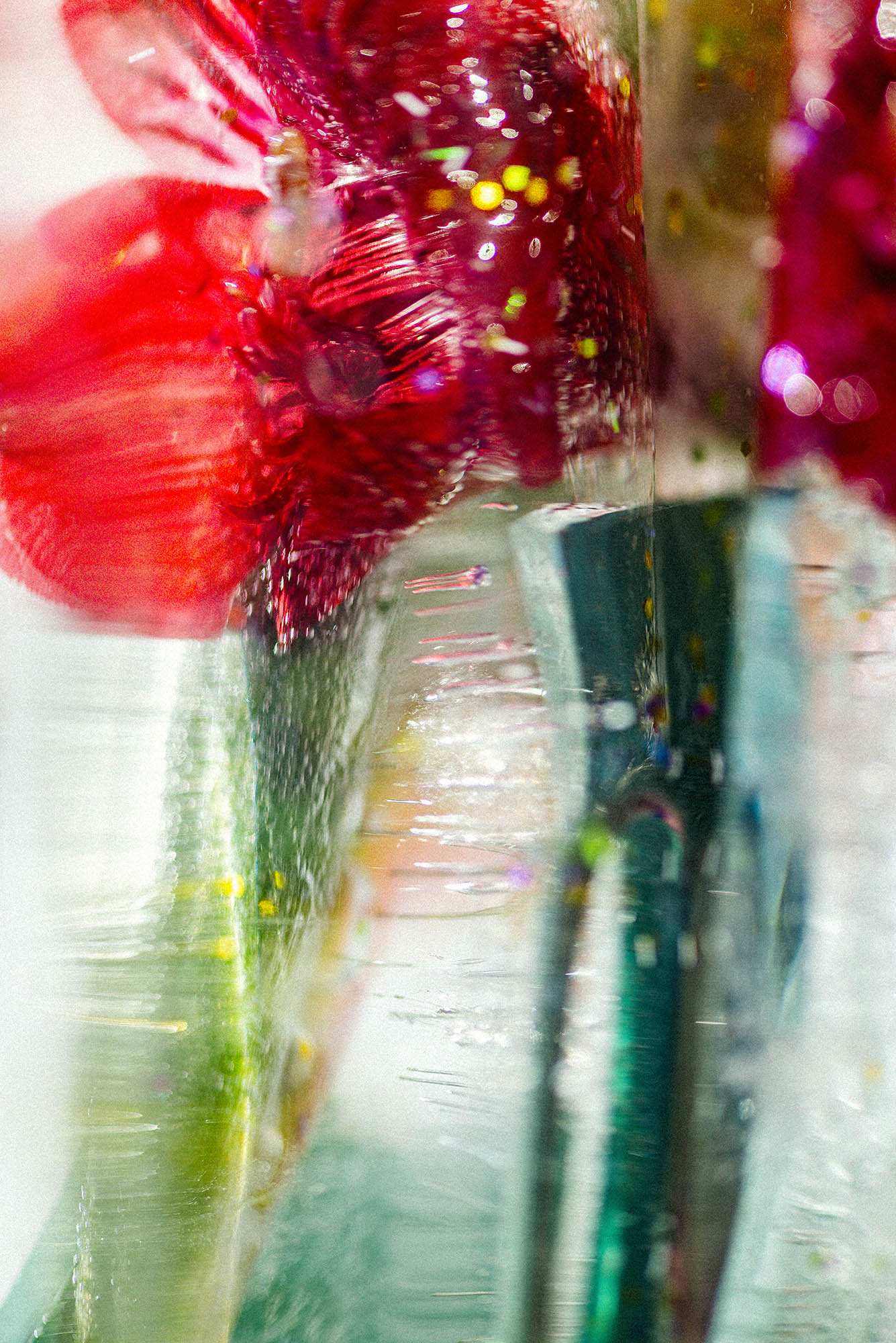STARDUST
Photographs are illusions. In a popular text from 1980, the American essayist Susan Sontag compares the photographic image with the shadow play in the famous cave of the philosopher Plato. In spirit this would make the Greek thinker of the fifth century BC the first photographer in world history. Plato's parable of the prisoners in a dark cave, who only ever perceive the shadows of the apparitions through a split of light, has mutated from the classic of philosophical idealism to the basic motive of photographic theory.
Presumably, Martin Ogolter also had the image of those trapped in rock and ignorance in mind when he made his first foray into his series “Stardust” in 2016 - a series based in content on the numerous connections between light, time and reality, but at first glance, at the picture level, only delivers abstractions and riddles. By draping flowers frozen in a block of ice on a mirror, photographing the plants thawing in the sunlight, and finally photographing the final image from an iPad screen, the artist subtly points out the many transformations and information shifts in the long process between image and picture. It seems as if the photograph was somehow related to the eponymous stardust - with informational units that emanate from mostly tiny matter particles in interstellar space, and whose light often takes tens of thousands of years to move from sheer infinity to the tiny world of our perception.
Stardust also brought to light in Ogolter's work “pastPresentfuture”, composed of many single images: In a way, we are still sitting in Plato's cave. We never see microcosms or macrocosms with our photographic equipment and their images; we only see their traces - light, fragments, poetic dust. Especially in a time when we increasingly perceive the world via technical data and iconographic pixelations, more and more medial processes are required - more and more detours and more and more time - until the pictures of a supposed reality burn themselves as images on our retina. It is precisely this growing difference that is repeatedly raised by Martin Ogolter in his work; Interestingly enough, this difference does not make our world clearer or more familiar, but in the end it makes us seem increasingly abstract and alien.
—Ralf Hanselle

























